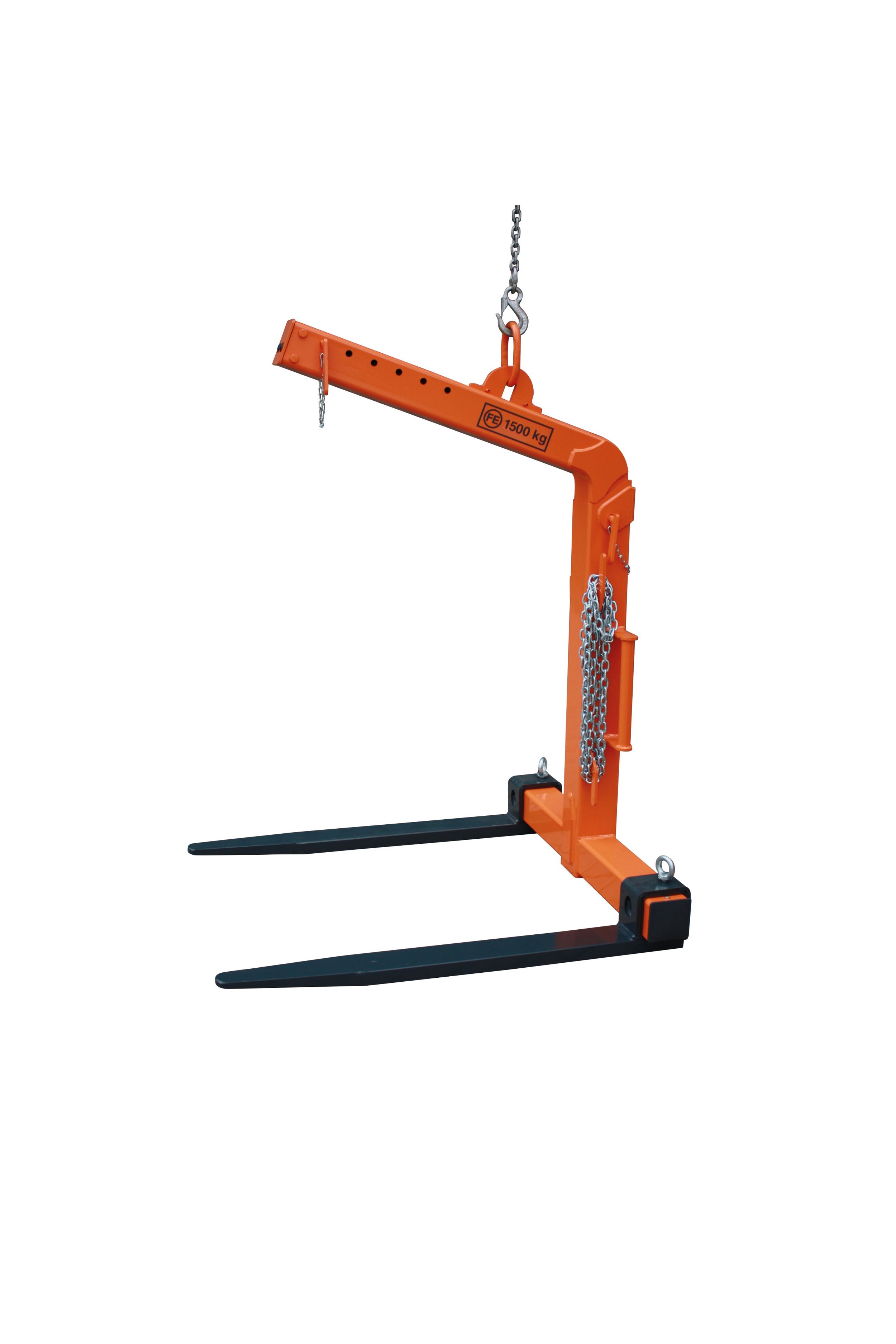Next Generation Pallet Lifters
Lifting pallets and loose items is a challenge we face in construction. When I was a tower crane operator I was filling in for another operator and lifting from the blind. The lift was a pallet for 5 gallon buckets of paint shrink wrapped together. I had not asked what it was or how we were lifting it. It was palletized and they used slings to lift the pallet. When it comes into view as I come over the edge of the building, it’s clear it’s not stable and it’s twisting. I immediately get it over the building to keep from being over people. It broke apart before I could land it. We painted that brand new roof. This is not an uncommon problem. When we leave it to judgements instead of supplying a rated lifter, people will make poor choices.
If you lift this pallet on slings, you now have wood nailed together as your safety factor.
The right choice is to have a structural lifter under the pallet so nothing flexes. What happens is you have some flex of the wood nailed together, that adds more point loading in certain spots which causes them to fail and eventually you have a zipper failure, or a full failure of the structure. The ASME B30.20 has a whole design document called the BTH-1 that tells manufacturers how to build and calculate for deformations to prevent just these sort of issues. This is the only safe way to lift. Other ways are simply rolling the dice with the lives of people on your jobsite. Finding out you were wrong is catastrophic.
What a structural lifter looks like. It doesn’t bend.
Another way to go is having a cage the contain everything. That pallet of items should be held together too. Bumping a column or wall shouldn’t be dislodging items. Instead of creating waste and taking the time to shrink wrap it all, you can put it in different cages. Our 1058’s are an example of these. If you get them with a ramp, you can roll in and out with a pallet jack to get materials in and out. Do them as a double and save lift cycles. It’s 3300 lbs of capacity per pallet.
Crane pallet cage with a ramp
In the UK we supply a pallet fork with a net. This makes it so you don’t have to wrap the items on the pallet, and if anything did dislodge, it would be caught. You install the self leveling forks in the pallet like any other pallet lift. Hoist up and the spring goes to work finding the center of gravity. Once it’s lifted, you can stop the hoisting and install the net in 15 to 20 seconds. Then it’s all secured and ready to fly.
Eichinger 1056 in Ireland
The truth is that we should be moving away from all box and pallet lifts. ASME B30.20 2025 has adopted “Load Containers”. The plastic pallet totes and wood boxes are not legal for lifting. They never were, but people could pretend it was OK. Now we have a national consensus code that says the safe way is in a rated “load container”. The General Duty Clause makes it so that employers have to keep the workplace safe from this known hazard now. We have affordable solutions and more expensive options. Get them with castors, ready for cranes and forklifts. There can be some operational gains to be had too. If you have a wood box to lift, you’ll need slings every time. If your crane and crew show up to put them on, it will take about 3 minutes of time. If that crane and crew are $500 per hour in total, then that wood box is costing you $25 our lifting baskets won’t. So if we have a $400 lifting basket and you are going to use it more than 16 times in it’s life, it’s going to pay you back in operational costs.
1311 with board holders. Around $250. They can come with four lifting links on the bottom.
Universal Bin. Same size as a pallet. Castor ready.
Our Pall Skips can just have anything tossed in from waste to John Shoes for forming.
Bulk Skips come up to 4 yards. Get them with heavy lifting eyes. Stacks. Castor options. Dumps out on lifting eyes in back too.
We really provide no excuse for lifting on a lifter that isn’t rated. We are talking about life and death. No one’s life should be gambled on a nail holding. Welds and structural steel are the law, and the only rational way to lift. You must lift as the manufacturer specifies. If you are a rigger and you are installing straps on a lifter and it’s not clear what the manufacturer wants you to do, then you aren’t doing your job well. The new ASME is also specific on instructions being available for your lifters.
If you want to work through the issue, I have decades of experience in hoisting. We can make this easier and faster for you. It doesn’t need to be a burden. This can be a safety and financial win in making these changes. Jobs can get done faster. Reach out at sales@cranegear.net and we work though the challenges to this a welcomed change.









